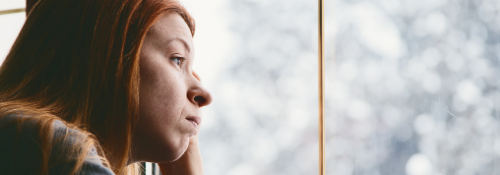
by Allie Wagner, LPC
Manager of Community-Based Clinical Services
We all know that sunlight and outdoor time does wonders for our mood. Especially during the pandemic, the CDC is recommending socializing outdoors as much as possible. Outside time may be the only opportunity you have to visit with high-risk loved ones. Now that Daylight Saving Time has come to an end and the weather is beginning to feel like winter, you may notice you’re not feeling your best anymore.
Seasonal Affective Disorder (SAD) is a type of Major Depressive Disorder that coincides with the seasons, often resulting in people feeling more depressed in the fall and winter months. Typical symptoms of SAD include:
- low energy
- hypersomnia (sleeping too much)
- overeating
- weight gain
- craving for carbohydrates
- social withdrawal
Although SAD may occur every year for some, the addition of the chronic stress and fatigue related to COVID-19 may increase how many people experience seasonal depression this year. The typical triggers for SAD – cold weather, lack of socialization, and holiday stress – are magnified as people try to navigate the pandemic. However, that does not mean that it’s a helpless battle, there are plenty of ways to combat Seasonal Affective Disorder that are COVID-19 safe:
- Bundle up and go for a lunchtime walk outside while it’s warmer and light out
- Virtual game night with friends
- Try new healthy recipes and cook with family
- Move your body – whether an intense workout in your living room or relaxing meditative yoga
- Practice journaling when you feel overwhelmed or disappointed
- Contact a doctor or mental health provider if you need additional assistance
Additional assistance may be needed if:
- You have thoughts about suicide or harming yourself
- You are feeling hopeless/helpless
- You are unable to complete your normal routine (i.e. work, school, hygiene, etc.) due to symptoms
- You feel sad more days than not
- Your symptoms continue to intensify or do not lessen with self-care
